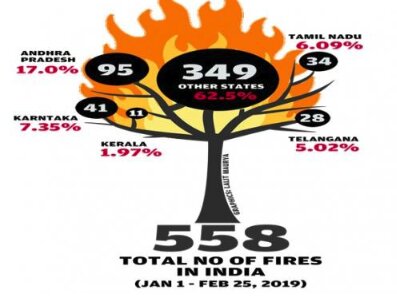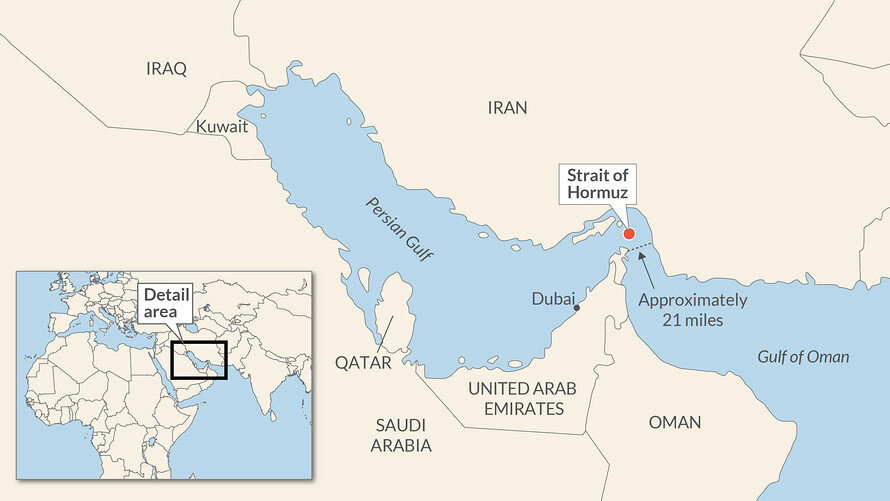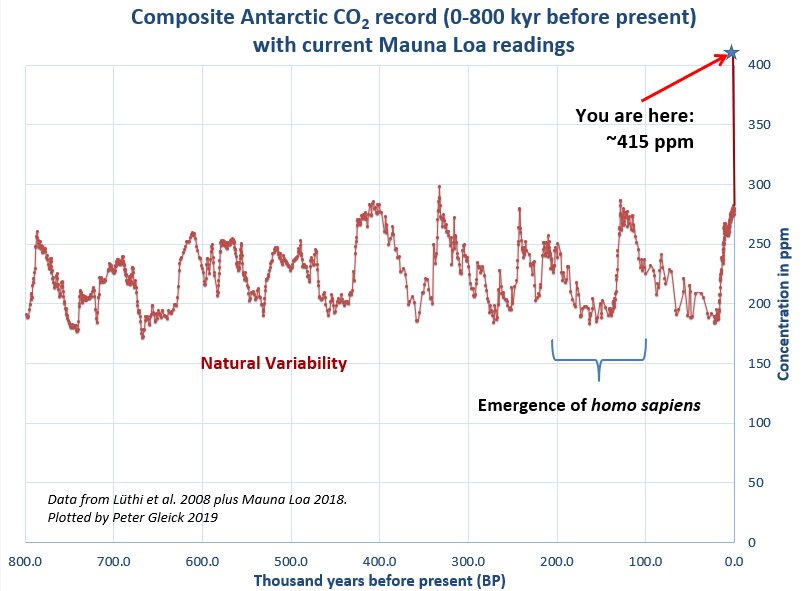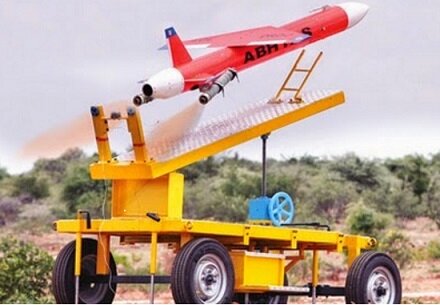Biodiversity & Environment
Forest Inferno
More than 900 hectares of forest land has been gutted in wild-fire in Uttarakhand. The number of forest fires shot up to 14,107 from 4,225 between November 2018 and February 2019, according to the Real-Time Forest Alert System of the Forest Survey of India (FSI).
Primary Causes of Wildfires
- Human Causes
- 90% of all wildfires are caused by humans.
- Human acts of carelessness such as leaving campfires unattended and negligent discarding of cigarette butts result in wildfire disasters every year.
- Accidents, deliberate acts of arson, burning of debris, and fireworks are the other substantial causes of wildfires.
- Natural Causes
- Lightning: A fairly good number of wildfires are triggered by lightning.
- Volcanic eruption: Hot magma in the earth’s crust is usually expelled out as lava during a volcanic eruption. The hot lava then flows into nearby fields or lands to start wildfires.
- Temperature: High atmospheric temperatures and dryness offer favourable conditions for a fire to start.
- Climate change is causing a gradual but highly significant increasing trend in surface air temperatures, and it leads to record-breaking extremes in many areas when it interacts with the normal periodic warming associated with an El Nino.
- An important climate variable for fire is vapour pressure deficit. It is a measure that combines temperature and relative humidity near the surface.
- Warmer temperatures and lower humidity cause vapour pressure deficit to increase which can dry fuels rapidly and allow fires to grow very fast
Types of Wildland Fires
There are three basic types of forest fires:
- Crown fires burn trees up their entire length to the top. These are the most intense and dangerous wildland fires.
- Surface fires burn only surface litter and duff. These are the easiest fires to put out and cause the least damage to the forest.
- Ground fires (sometimes called underground or subsurface fires) occur in deep accumulations of humus, peat and similar dead vegetation that become dry enough to burn. These fires move very slowly, but can become difficult to fully put out, or suppress. Occasionally, especially during prolonged drought, such fires can smoulder all winter underground and then emerge at the surface again in spring.
The Effects of Fire on Ecosystems
- Mosaic Patterns: Wildland fires create a mixture of totally burned, partially burned, and unburned sections called a burn mosaic. The burn mosaic results in varied regrowth rates that create a vegetation mosaic.
- Soil Conditions: Wildland fires can be both a detriment and a benefit to soil. The soil can become more nutrient-rich after a fire due to the high mineral content of the ash and charcoal and also due to the warm, moist conditions that increase microbial activity. The intense heat can also cause soil particles to become water-repellant, causing rainwater to run off. As the water runs off it can carry soil particles with it and lead to erosion.
- Climate Related:
- ‘Black carbon’ from the smog and ash covers the glaciers, making them more prone to melting. In India, the glaciers most likely to be affected by this are the ones situated at low altitudes, like Gangotri, Milam, Sundardunga, Newla and Cheepa.
- Water in the rivers is also likely to get much polluted from the effects of this black carbon.
- In 2016, forest fires have raised average temperatures across northern India by 0.2 degree Celsius, which had a bad effect on monsoons.
Mitigation Strategies
- Technology
- FSI has begun the development of systems for early warning and fire danger rating, and these efforts should be continued.
- Digitization of management boundaries by the state forest departments should be completed, so that the FSI can more accurately determine which fires to report and to whom.
- Fire alert systems can also be improved by integrating ground-based detection with the satellite-based alert systems.
- Community Engagement
- Sensitization of communities should be done to ensure that fire is used responsibly in a way that promotes forest health, while seeking to avoid damaging and out-of-control fires.
- Provision of training should extend beyond state-managed forests to community institutions in regions such as the Northeast, where communities are responsible for managing most of the forest estate.
Biodiversity & Environment
DNA Database for Indian Rhinos
The Ministry of Environment Forest and Climate Change (MoEFCC) has begun a project to create DNA profiles of all rhinos in the country.
- The project is a subset of the Centre’s larger, ongoing rhino conservation programme.
- By 2021, the project’s deadline, the Indian rhino could be the first wild animal species in India to have all its members DNA-sequenced.
- The project will help in curbing poaching and gathering evidence in wildlife crimes involving rhinos.
- The database will be hosted in the Wildlife Institute of India (WII) headquarters in Dehradun.
- There are three species of rhino in Asia — Greater one-horned, Javan and Sumatran. Javan and Sumatran Rhino are critically endangered and the Greater one-horned (or Indian) rhino is vulnerable In IUCN Red List.
- They are spread across India, Nepal, Bhutan, Indonesia and Malaysia. These countries are also known as Asian Rhino Range Countries.
- Only the Great one-horned rhino is found in India.
- At present, there are about 2,600 Indian rhinos in India, with more than 90% of the population concentrated in Assam’s Kaziranga National Park.
National Rhino Conservation Strategy
- It calls for active engagement between India and Nepal to conserve the Greater one-horned rhinoceros.
- The plan said the single population of rhinos in Sukla-Phanta (Nepal), Valmiki Tiger Reserve (India) and Chitwan National Park (Nepal) and Dudhwa (India) is separated by the political boundary between the two countries.
- It asks for the management of the two population under the same protocol, instead of managing the two population separately.
- The plan calls for expanding distribution range as the occurrence of 90% of the rhino in one protected area is a cause of concern and conservation of existing and potential rhino habitats need to be made a national priority.
Indian Rhino Vision 2020
- Launched in 2005, Indian Rhino Vision 2020 is an ambitious effort to attain a wild population of at least 3,000 greater one-horned rhinos spread over seven protected areas in the Indian state of Assam by the year 2020.
- Seven protected areas are Kaziranga, Pobitora, Orang National Park, Manas National Park, Laokhowa wildlife sanctuary, Burachapori wildlife sanctuary and Dibru Saikhowa wildlife sanctuary.
- It is a collaborative effort between various organisations, including the International Rhino Foundation, Assam’s Forest Department, Bodoland Territorial Council, World Wide Fund - India, and the US Fish and Wildlife Service.
Biodiversity & Environment
CO2 Level Hit Record High
Recently, the Mauna Loa Observatory in Hawaii (USA), has detected the highest levels of planet-warming carbon dioxide in Earth's atmosphere since records began.
Key points
- The CO2 level, detected by the observatory, was more than 415 Parts Per Million (PPM).
- The last time Earth's atmosphere contained this much CO2 was more than three million years ago when global sea levels were several metres higher and parts of Antarctica were covered in forest.
- Earth's average surface temperature has already increased 1°C since pre-industrial times due to man-made emissions and, in spite of the Paris deal and increasing public awareness of the problem, we haven’t succeeded in arresting Carbon emissions.
- In 2018, the Intergovernmental Panel on Climate Change (IPCC), reported that at the current rate of emissions, the world will breach the global warming limit of 1.5°C between 2030 and 2052 and that will have a catastrophic impact on the earth.
Paris Agreement on Climate Change
- Paris Agreement was concluded at the United Nations Climate Change Conference (UNFCCC), COP 21 that was held in Paris in 2015, which was also the 11th session of the Meeting of the Parties to the 1997 Kyoto Protocol (CMP 11).
- The Paris Agreement's aim is to keep the global temperature rise well below 2 degrees Celsius above pre-industrial levels and to pursue efforts to limit the temperature increase even further to 1.5 degrees Celsius.
- The Paris Agreement requires all Parties to put forward their best efforts through “intended nationally determined contributions” (INDCs) and to strengthen these efforts in the years ahead.
- The Paris Agreement, in contrast with the 1997 Kyoto Protocol, makes all countries responsible for reducing GreenHouse Gases (GHGs) instead of just the developed or Annex-1 countries, which are responsible for the bulk of the total GHG concentrations in the atmosphere.
India’s Intended Nationally Determined Contributions (INDCs)
- To reduce the emissions intensity of its GDP by 33 to 35% by 2030 from 2005 level.
- To achieve about 40% cumulative electric power installed capacity from non-fossil fuel based energy resources by 2030, with the help of transfer of technology and low-cost international finance, including from Green Climate Fund.
- To create an additional carbon sink of 2.5 to 3 billion tonnes of CO2 equivalent through additional forest and tree cover by 2030.
Intergovernmental Panel on Climate Change (IPCC)
- The Intergovernmental Panel on Climate Change (IPCC) is the international body that provides policymakers with regular assessments of the scientific basis of climate change, its impacts and future risks, and options for adaptation and mitigation.
- It was set up in 1988 by the World Meteorological Organization (WMO) and the United Nations Environment Programme (UNEP).
- Headquarters: Geneva, Switzerland
International Relations
Strait of Hormuz
In a recent incident, four commercial vessels were sabotaged near Fujairah (an emirate of the UAE), one of the world’s largest bunkering hubs lying just outside the Strait of Hormuz.
- The incident has come at a time of heightened tensions in the Gulf. The US has deployed an aircraft carrier, bomber planes and defense missiles to the region amid rising tensions with Iran, which has threatened to block oil shipments through the Strait of Hormuz if the US succeeds in halting its energy exports.
Background
- In 2015, Iran agreed to a long-term deal referred to as the Joint Comprehensive Plan of Action (JCPOA) on its nuclear programme with the P5+1 (US, UK, France, China, Russia and Germany).
- Under the accord, Iran agreed to limit its sensitive nuclear activities and allow in international inspectors in return for the lifting of crippling economic sanctions.
- The US withdrew from the deal in 2018 and also recently eliminated the exceptions to US sanctions on Iranian oil.
- Sanctions have pushed Iran’s economy towards crisis. Recently, Iran has threatened to scale back its obligations under the 2015 nuclear deal and to close the Strait of Hormuz.
Strait of Hormuz
- The waterway separates Iran and Oman, linking the Persian Gulf to the Gulf of Oman and the Arabian Sea.
- The Strait is 33 km wide at its narrowest point, but the shipping lane is just three km wide in either direction.
- Most crude exported from Saudi Arabia, Iran, the UAE, Kuwait and Iraq – all members of the Organization of the Petroleum Exporting Countries (OPEC) – is shipped through this waterway.
- It is also the route used for nearly all the liquefied natural gas (LNG) produced by the world’s biggest LNG exporter, Qatar.
- The UAE and Saudi Arabia have sought to find other routes to bypass the Strait, including building more oil pipelines.
International Relations
Huawei Issue
Recently, a British cabinet minister lost his job over controversy around the Chinese company ‘Huawei’.
Suspicion on Huawei
- The concerns are over a perceived security risk posed by Huawei to countries it is operating in. For example, as per report in Bloomberg, Vodafone had identified hidden backdoors in the software that could have given Huawei unauthorised access to the carrier’s fixed-line network in Italy.
- The US government has banned Huawei from the country’s networks and has advised the UK, Australia, New Zealand and Canada to do the same.
- The US claims that Huawei’s close ties with the Chinese government and its army make it a national security risk.
- Among other countries, New Zealand and Australia have blocked the use of Huawei’s equipment in the rollout of 5G networks.
India’s Stand
- India is yet to take a decision on whether to permit Huawei in 5G roll-outs.
- It has, however, not stated explicitly whether it will allow Huawei to participate in the trials as Department of Telecommunications (DoT) awaits a recommendation from the committee examining security risks arising out of Huawei’s presence in 5G networks.
-
Moreover, the Department of Telecommunications itself is believed to be divided.
-
One section believes that the country can't have just two network equipment suppliers and there are risks from European vendors as well. This section believes Huawei should be given an opportunity in the 5G trials which will also allow India to scrutinize the security vulnerabilities if any.
-
The other believes that Chinese vendors are a serious security threat to India, given that those companies are - under Chinese law - duty bound to share information with the government.
-
-
Huawei Technologies Co. Ltd is even willing to sign a “no back door" pact with the Indian government to assuage potential security concerns.
-
A “back door" is a point of access in a network/equipment that guarantees entry into the network/equipment under exceptional circumstances.
-
In its absence, the equipment supplier would not be able to access the customer’s network without consent.
-
- Meanwhile, Huawei Technologies Co. Ltd is looking at clarity from the Indian government following the US blacklist citing security concerns and has come under scrutiny worldwide.
Important Facts For Prelims
Important Facts For Prelims (14th May 2019)
By 2040, 15 million will Need Chemotherapy
According to a new study published in ‘The Lancet Oncology’, by 2040, 15 million individuals each year will need chemotherapy, amounting to a 53% increase from 9.8 million in 2018.
Key highlights
- This study is the first of its kind to estimate the scale of chemotherapy provision needed at national, regional, and global scales to respond to this situation.
- Cancer incidence is expected to rise from 17 million to 26 million between 2018 and 2040.
- The estimated proportion of patients needing chemotherapy who reside in low-income or middle-income countries was 63% in 2018, and will be 67% in 2040.
- Of the 15 million people who will require chemotherapy in 2040, more than one-third will be living in eastern Asia (35%), 12% in south central Asia, 10% in northern America, 7% in South eastern Asia, 6% in South America, and 5% in western Europe.
- In 2018, 65,000 cancer physicians were required to deliver optimal chemotherapy. This number is expected to rise to 100,000 by 2040.
- This study will help to further guide policy makers and stakeholders in priority settings involved in setting up health infrastructure and strengthening and educating the future workforce.
Chemotherapy
- It refers to the treatment of diseases by chemical compounds.
- Chemotherapeutic drugs were originally those employed against infectious microbes, but the term has been broadened to include anticancer and other drugs.
- It is more popularly used term for treatment of cancer.
- Normally, cells grow and die in a controlled way, but cancer cells keep growing without control.
- Chemotherapy works by killing the cancer cells, stopping them from spreading, or slowing their growth.
- However, it can also harm healthy cells, which causes side effects.
ABHYAS
Defence Research and Development Organisation (DRDO) conducted successful flight test of ABHYAS – High-speed Expendable Aerial Target (HEAT) from Interim Test Range, Chandipur in Odisha.
- It is an unmanned aerial vehicle based on microelectromechanical systems (MEMS) navigation system.
- It uses indigenously developed MEMS-based navigation system for its navigation and guidance.
- MEMS-based INS (inertial navigation system) are being used in small unmanned aerial vehicles (UAVs). However, to meet the stringent operational requirements in the defence services, UAVs and manned aerial vehicles (MAVs) are being deployed with MEMS-based INS.
- MEMS inertial navigation systems with integrated GPS have advantages like:
- Higher data output rates
- Lower power consumption
- Orientation monitoring and control
- Cost effective
Water Hyacinth
- Water Hyacinth (Eichhornia crassipes) is a highly invasive weed which is considered to pose a threat to the many aquatic ecosystems it grows.
- The problem of Water Hyacinth is exacerbated in slow-moving water bodies.
- Because of the density of the mats it forms, it has the ability to out-compete other native aquatic plant life and block sunlight from entering the water, thus causing the death of submerged flora as they are unable to photosynthesise.
- This in turn, depletes oxygen in the water and kills native fish and other organisms in the ecosystem.
- Its positive environmental benefits included enhanced availability of refugia and feeding centre’s for fish and various other aquatic fauna at narrow stationery fringes of the weed whose roots were regularly flushed with well oxygenated waters. Such water hyacinth fringes were rich in a variety of algae, and various invertebrates.






